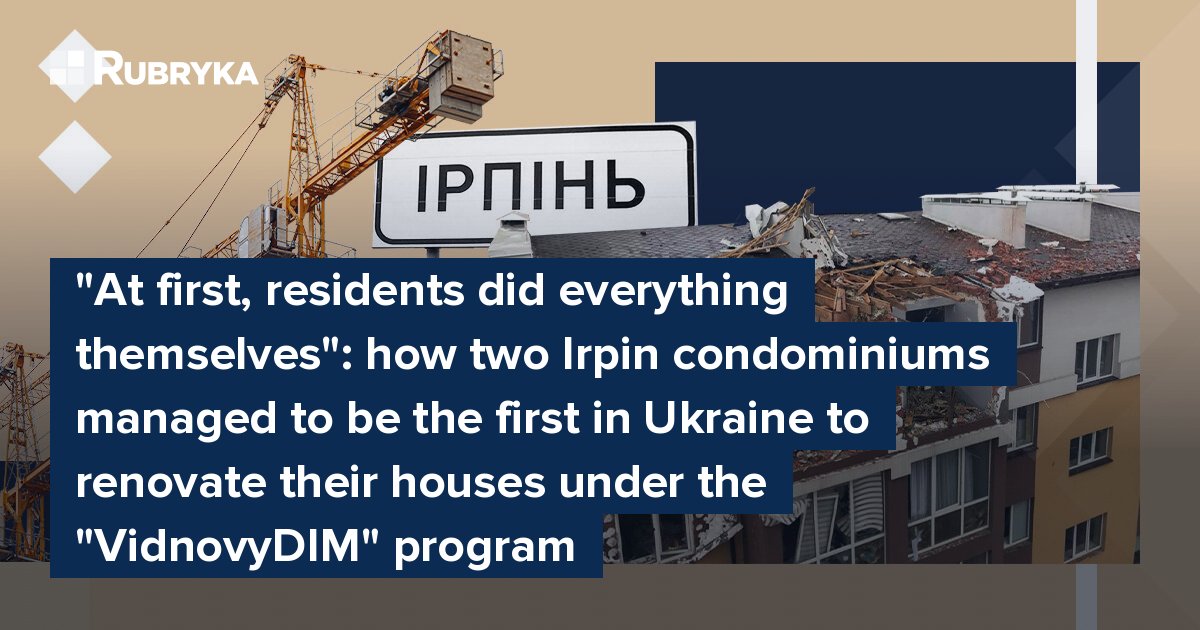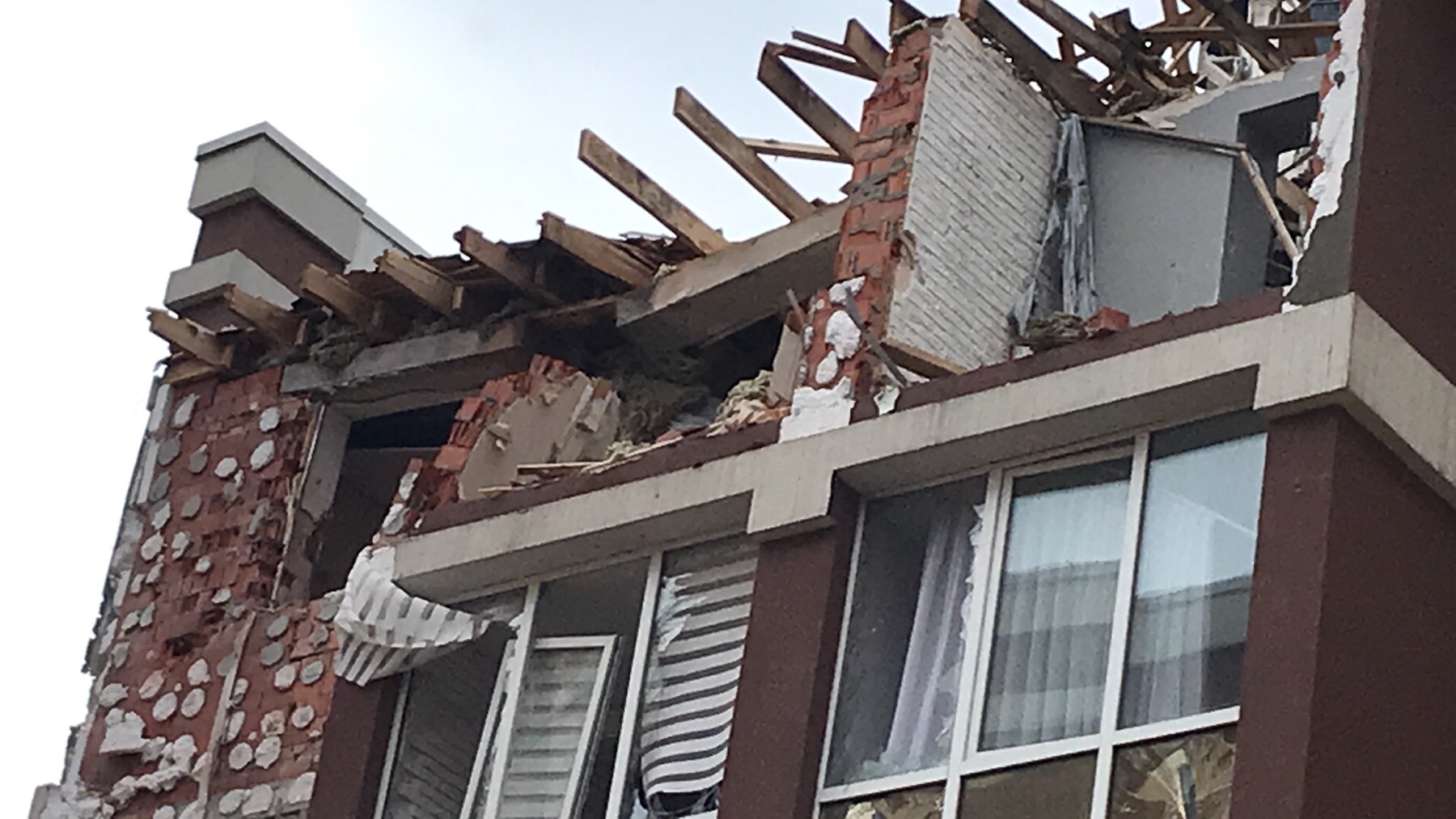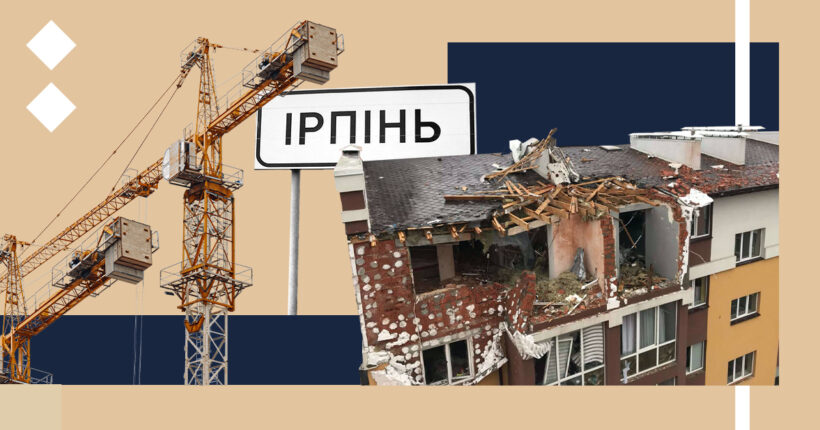
What is the problem?
As a result of Russia's military aggression in Ukraine, almost 18,700 multi-story residential buildings need. In Irpin, nearly three-quarters of the city was affected – 524 apartment buildings were damaged, with over 1500 private households completely destroyed and another 1500 damaged.
What is the solution?
The state, international organizations, charitable foundations, and the people living in those buildings all worked together to rebuild. A separate solution also appeared for condominiums: in November 2022, the Energy Efficiency Fund of Ukraine launched the "VidnovyDIM" program. It provides for the financing of works on the restoration of residential buildings of Associations of co-owners of multi-apartment buildings (OSBB) damaged as a result of the military aggression of the Russian Federation against Ukraine. The European Union allocated 5 million euros to the pilot project.
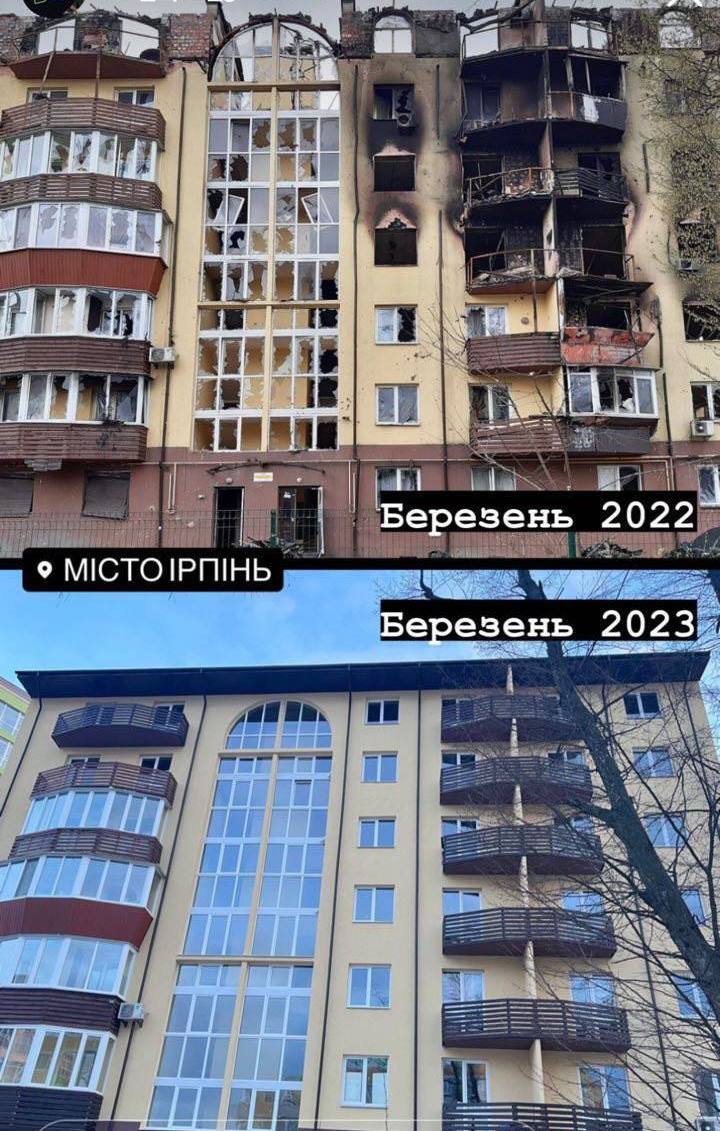 On the collage: the Novo-Oskolskyi residential building after being hit by a shell and after recovery. Photo credit to Olena Salamatova.
On the collage: the Novo-Oskolskyi residential building after being hit by a shell and after recovery. Photo credit to Olena Salamatova.
The Irpin condominiums were the first to restore their homes through the "VidnovyDIM" program. By the end of January 2023, four buildings of the "Zatyshny 2020" [Cosy 2020 – ed.] condominium and Novo-Oskolskyi residential building had been restored. Rubryka discovered what made this success possible and what else is needed to be done.
How did it all happen?
A direct hit by high-explosive shells
Olena Salamatova, the head of the Novo-Oskolskyi condominium, recounts: "On March 23, 2022, our building was hit with four high-explosive shells, resulting in the complete demolition of the roof, the seventh floor, and an ensuing fire that lasted for two days. Fortunately, the last elderly person, a woman who had been in her apartment all this time, was persuaded to go to a shelter in the morning after all."
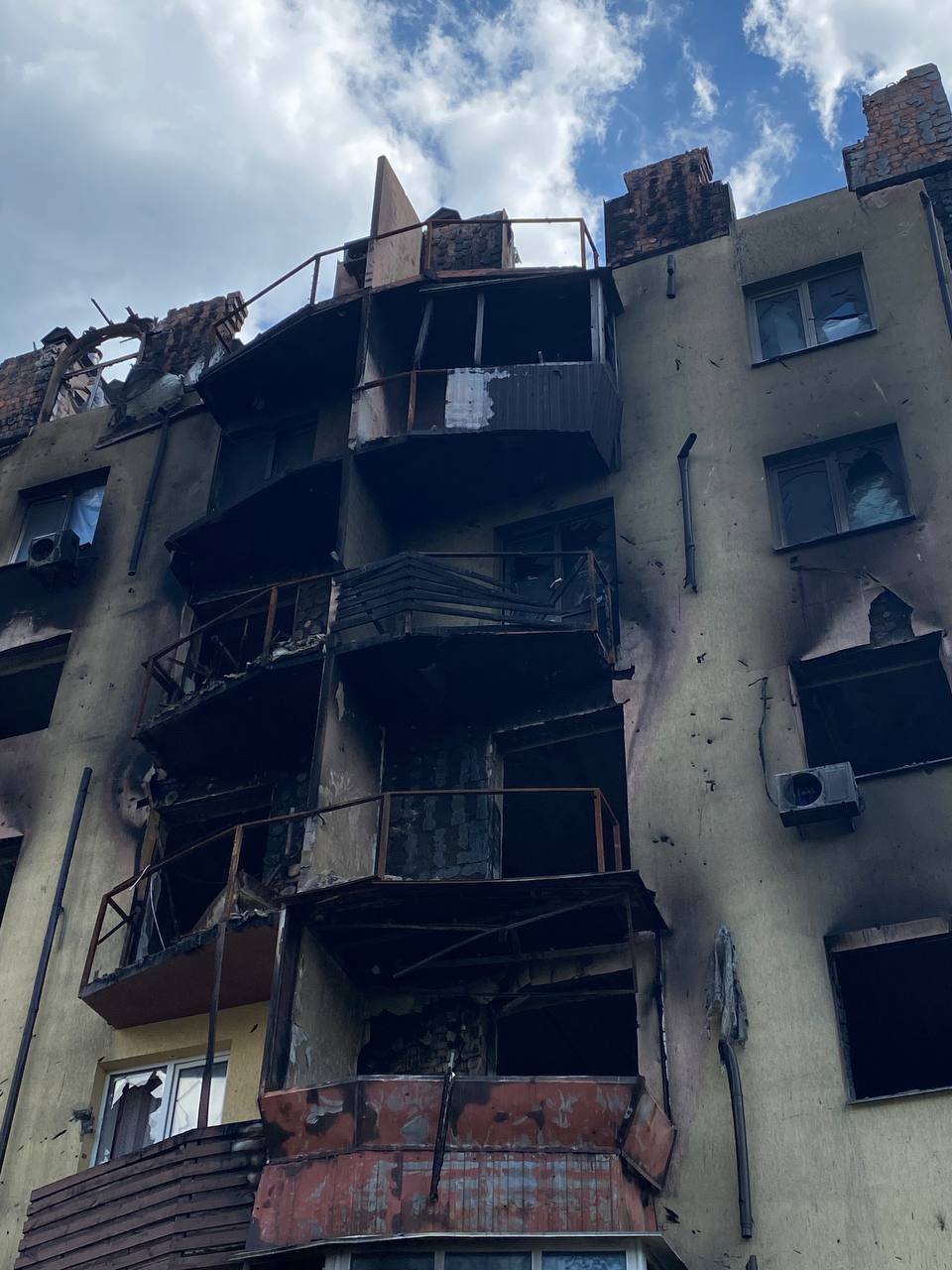
Consequences of Russian shelling of a house in Irpin Novo-Oskolsky residential complex. Photo credit to Olena Salamatova
"She was likely in a state of shock, not comprehending what was going on, why there was no electricity, gas, and water. She just sat there in her home, and food was brought to her. And then, when the Russian army began to retreat, there were powerful air raids, and it was already persuaded to take shelter. She moved in, and it all started a few hours later."
Olena Lytvynenko, the head of the board of the "Zatyshny 2020" condominium, remembers that the shelling occurred in the morning. At that time, 13-14 people, including her and two kids, were left in the complex.
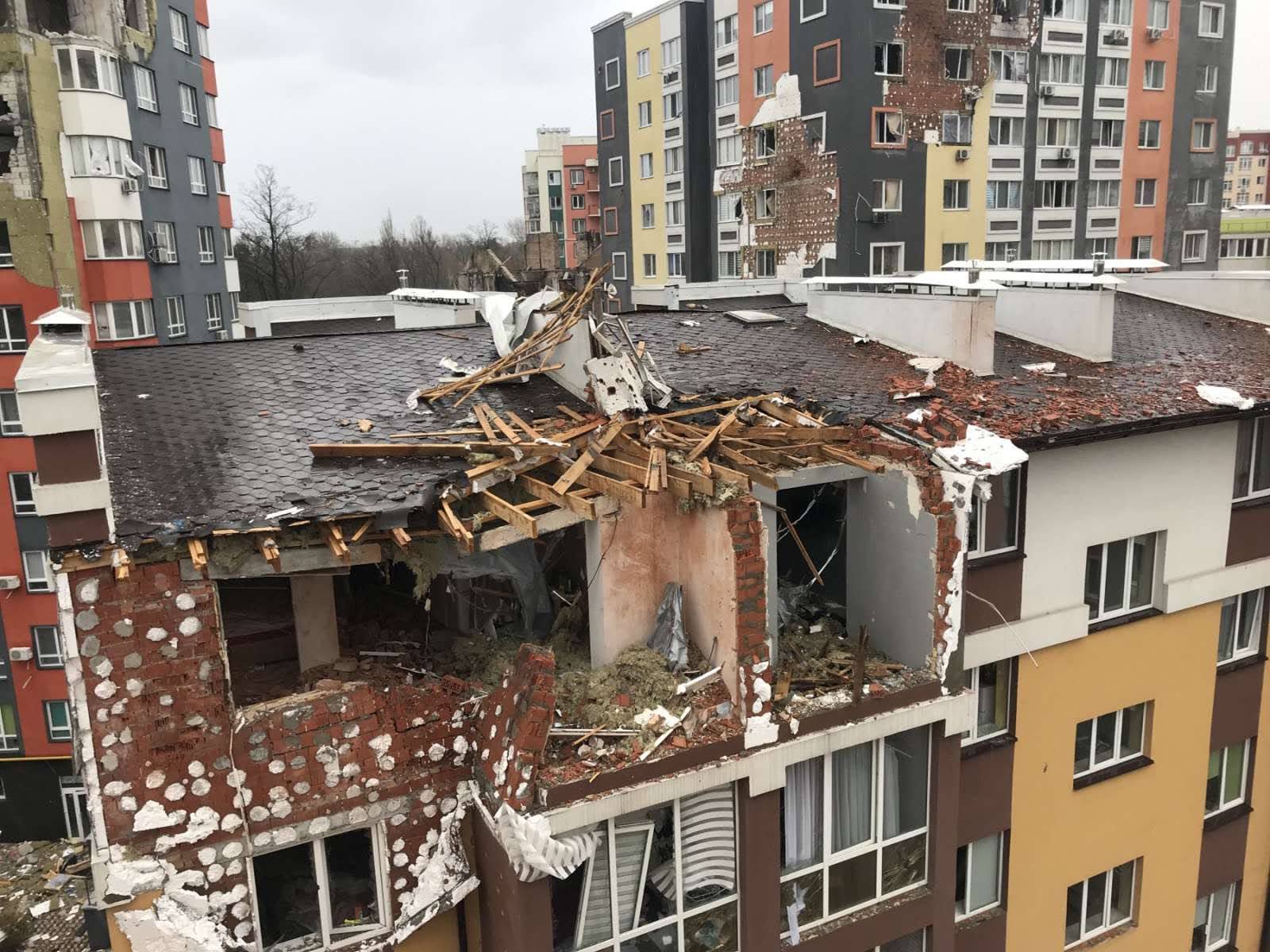
The Zatyshny 2020 housing complex had a building that got damaged. Photo credit goes to the "Zatyshny 2020" condominium.
At the "Zatyshny 2020" housing complex, on March 23, 2022, five out of the six five-story buildings were damaged.
"Two houses were badly damaged; there were several hits to the roof. Thankfully, we didn't go up in flames, but the damage was pretty extensive. The facade part of one house was damaged on two sides, and the other one's roof and facade were both busted up. The foundation's supporting beams took a hit, too," says Olena Lytvynenko.
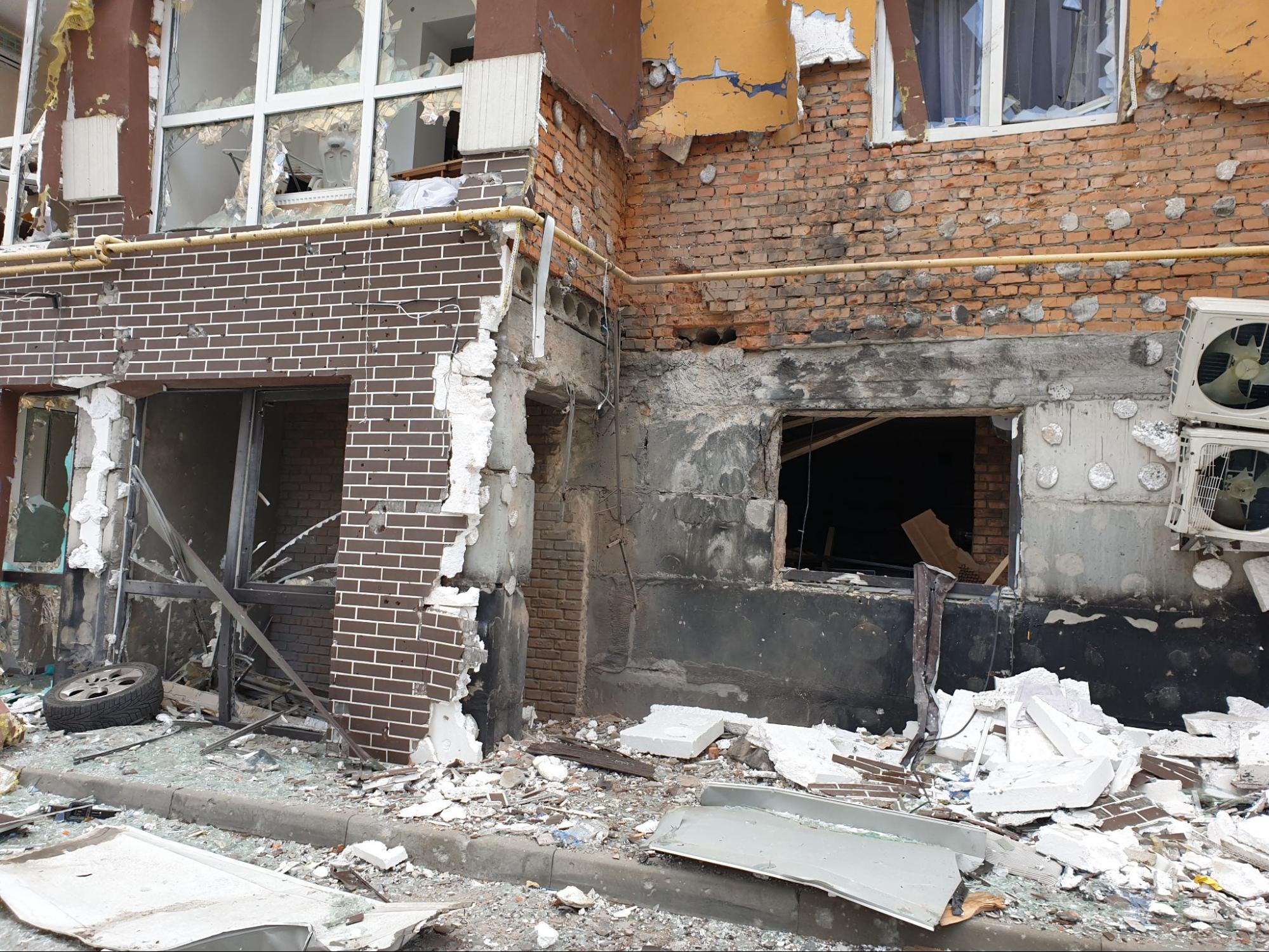
One of the buildings in the Zatyshny residential complex has a damaged reinforced belt. This photo was courtesy of the "Zatyshny 2020" condominium.In the Novo-Oskolskyi apartment building, 40% of the apartments were devastated by shelling and the ensuing fire – the whole sewage and water supply system was ablaze, the intense heat wrecked the flooring between levels, and the power system was damaged. Olena Salamatov remarked on the severity of the destruction, saying that all sorts of stuff had fallen down the sewer and vent shafts into the basement of the building, and even the apartments that didn't burn had filled up with smoke.
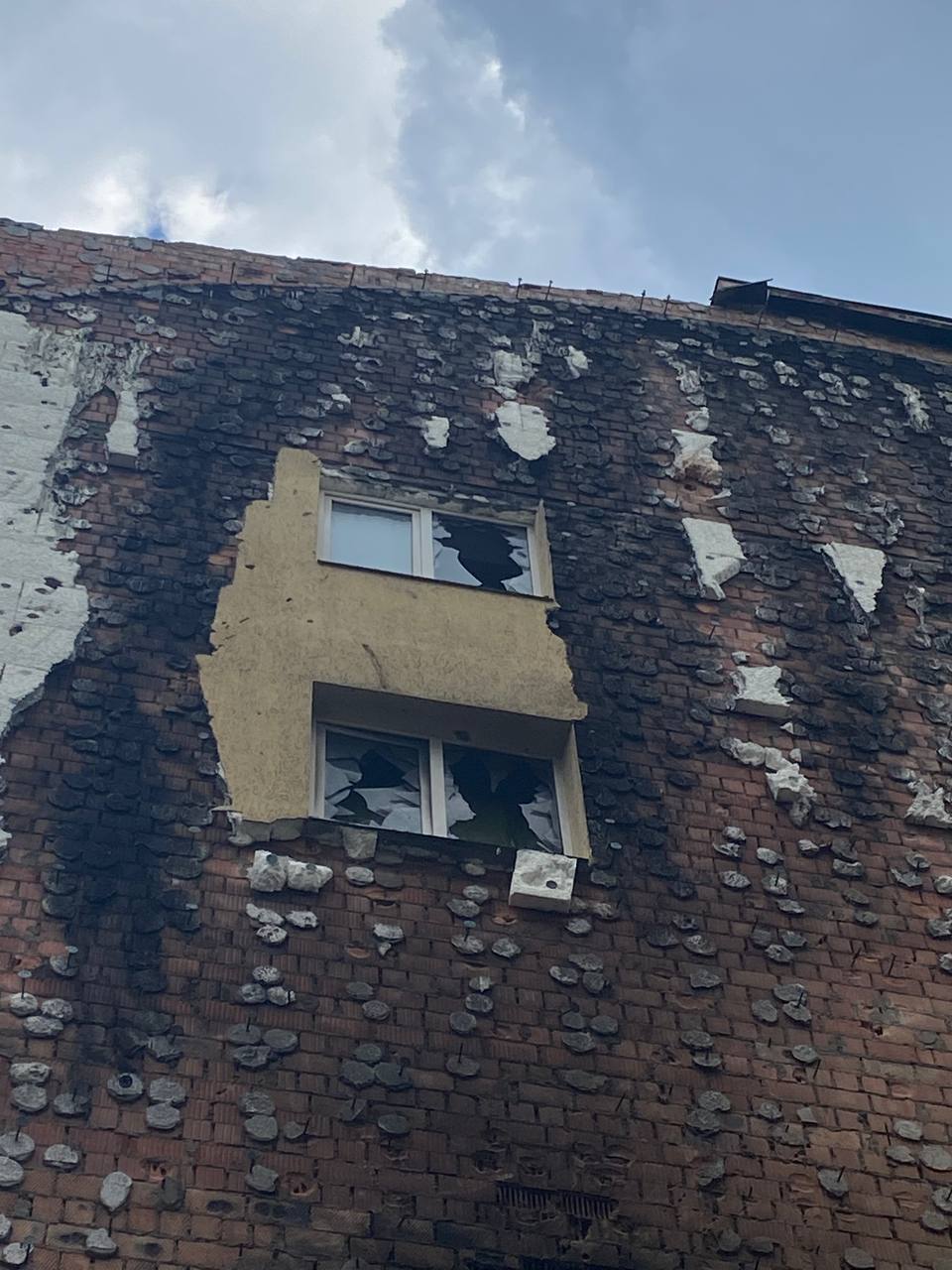
Russian shelling damaged the Novo-Oskolskyi apartment complex, as seen in this photo taken by Olena Salamatova.
How does it work?
They had removed the rubble, cleared out the trash, and put roofs on before the aid programs came into operation
Olena Lytvynenko remembers: "Naturally, first off, we got to work removing the debris that we could, checked out the state of our homes, and started to order materials to do a makeshift fix to the roof so that we wouldn't get flooded."
When the residents of both housing estates started coming back gradually, they started talking about restorations. Back then, there weren't any assistance programs, so both "Zatyshny 2020" and Novo-Oskolskyi residential buildings had to do much work with only residents' money.

"It's lucky he's so young and doesn't know what's happening behind his back," remarks Olena Salamatova about this photo of her son. Photo courtesy of Olena Salamatova.
In particular, the roof, armor belts, and supporting structures in "Zatyshny" were fixed up.
"We put much effort in, but it didn't cost us much because we mostly did everything ourselves. We were informed, for example, that we needed certain materials from a specific brand and company. So we started to look at all the stores that had leftovers. We ended up saving a lot on materials. Plus, since we didn't hire someone to do the job, we only paid the contractor for the actual work. The locals fetched the material themselves, shifted it, and cleared out the garbage. So we saved twice as much," states Olena Lytvynenko.
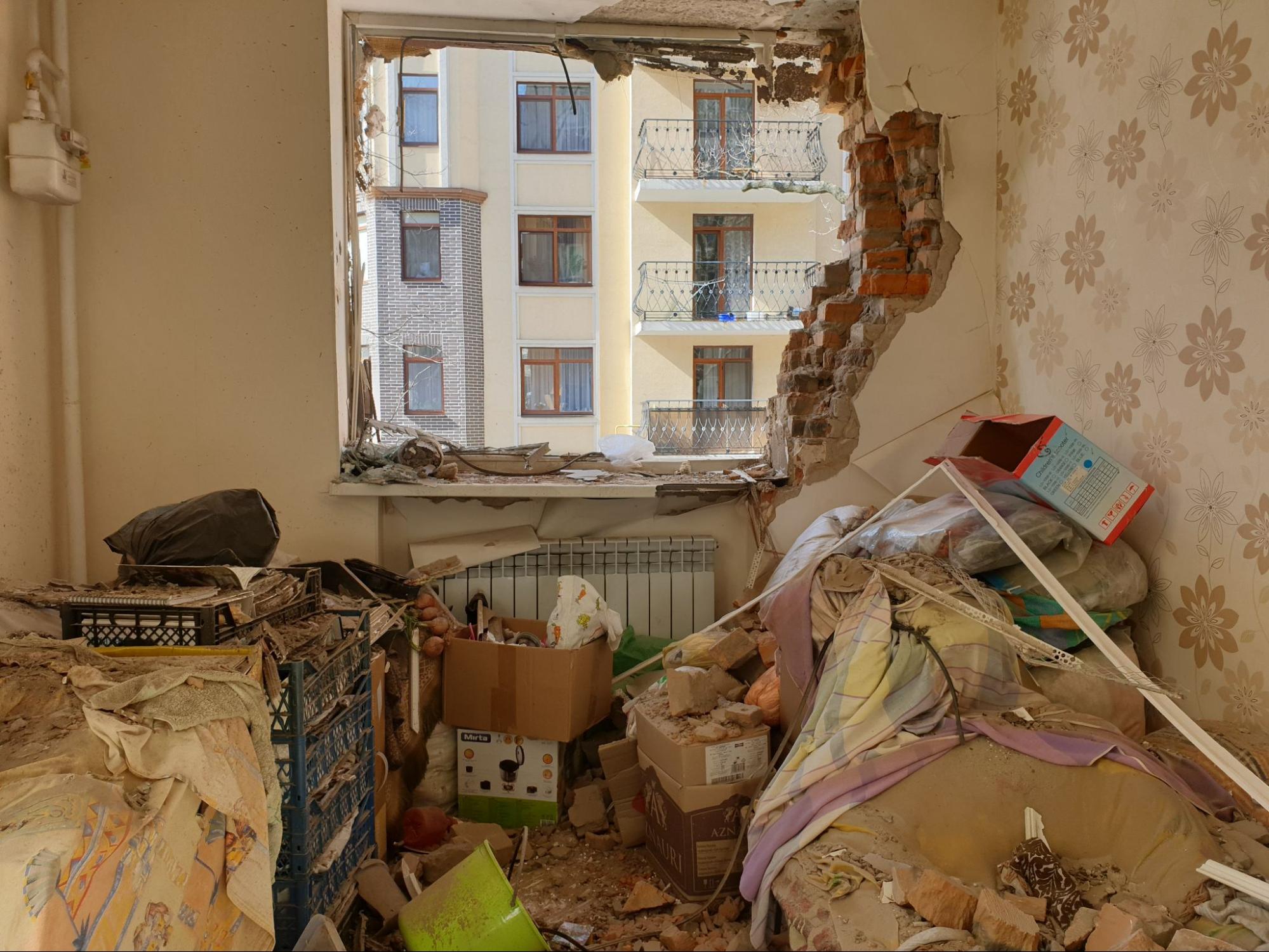
Damage to the "Zatyshny 2020" residential complex. Photo courtesy of the "Zatyshny 2020" residential complex.
Olena Salamatova says they gathered with residents nearby and communicated through Viber groups: "When I returned to our apartment complex, it took me a day to decide that we should keep living there. " So they decided to restore the housing but wanted to wait for the conclusions of the state commission that inspected the houses.
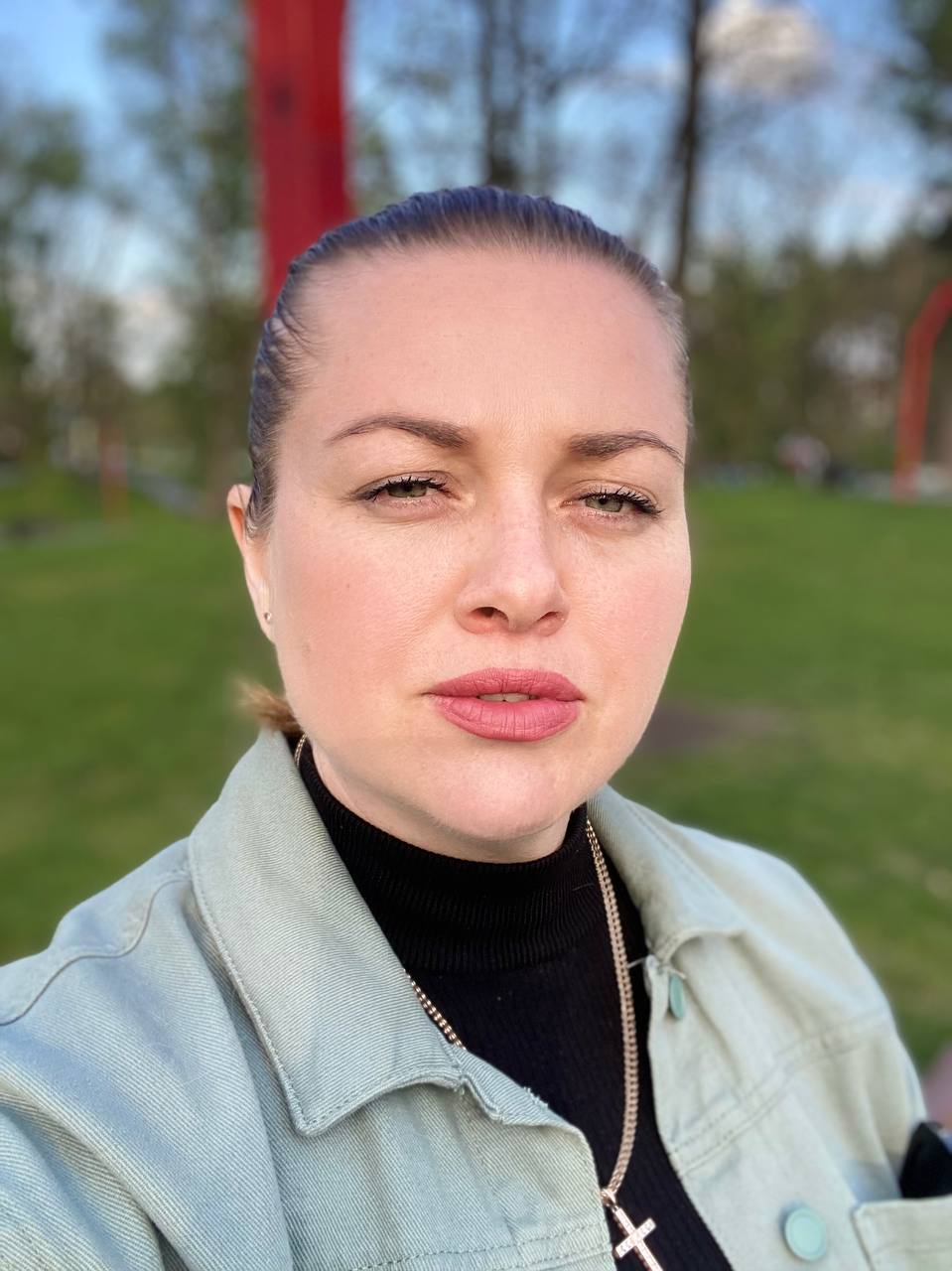
Olena Salamatova, head of the Novo-Oskolskyi residential complex, posing for a photo.
"We received a report that in our building, the roof and the seventh floor belong to the fourth category – "completely destroyed." The rest of the area is the third category – an emergency state, habitation is prohibited until restoration works," says Olena Salamatova.
The commission reached a preliminary conclusion that the house needs to be covered as soon as possible.
"We figured it out. The locals started clearing the rubble on their own – we hauled and removed about 90 tons of rubble from the building. Apart from the roof, we also had a huge problem with one wall that was hit by a projectile: it peeled off from the main structure, was in an emergency situation, hung over the road, and was dangerous for everyone who passed or drove by," continues the head of the Novo-Oskolskyi condominium.
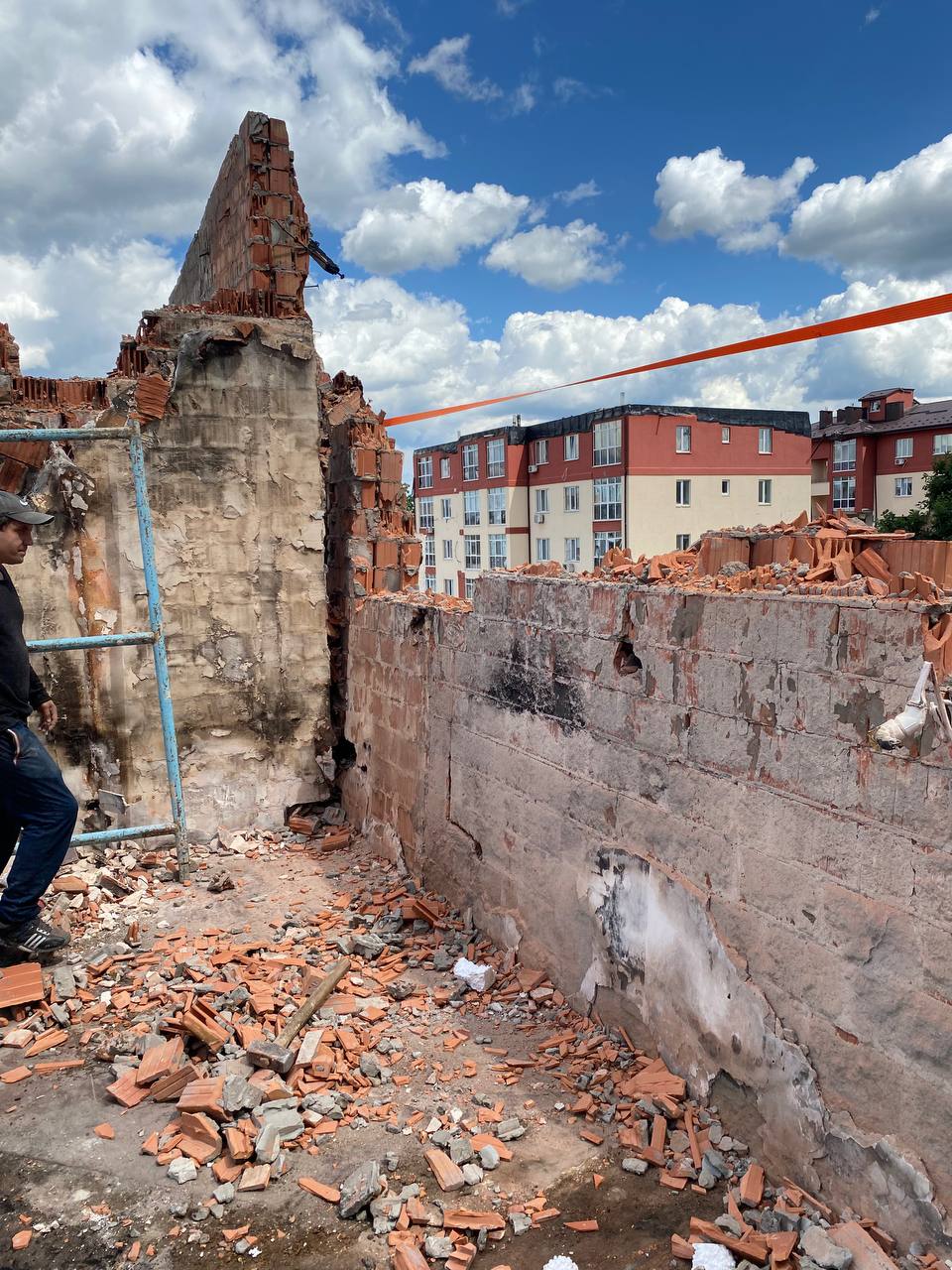
The Novo-Oskolskyi residential building has suffered a lot of damage, a photo taken by Olena Salamatova.
Then the residents started searching for a contractor to do the construction work. Olena said they lucked out and found someone reliable enough who had things done a month earlier than expected. But to get the roof, the 7th floor, and the main emergency structures fixed up, everyone had to pitch in 40,000 hryvnias.
How "VidnovyDIM" program got started in Irpin
Tamara Burenko, deputy of the Irpin City Council and head of the Deputy Commission on Housing, Energy, and Industry, initiated the "VidnovyDIM" program for Irpin building restoration. As she searched for ways to gain funding to refurbish skyscrapers, she reached out to the Energy Efficiency Fund and invited its leadership to visit Irpin.
"From the very beginning, their vision was that houses should be given funds to replace windows. And I convinced people that they could replace the windows themselves. And if the house is burned, more funds and slightly different measures are needed. So, at my invitation, the Director of the Foundation, Yehor Fareniuk, came with his experts, we checked out our heavily damaged sites, and they met the heads of condominiums. The Foundation representatives went to look and saw that this place wouldn't be getting any windows replaced. Especially since near the very first house we approached, we saw broken windows being loaded into a particular container to hand them over. That is, people themselves have already done everything where only the windows were damaged."
Destruction in the Zytyshny 2020 housing complex. Photo provided by Ztyshnyi 2020 residential complex
This visit occurred during the summer of 2022. Olena Salamatova, the head of the "Novo-Oskolskyi" condominium, remembers that, at that time, the Efficiency Fund representatives didn't have the entire understanding of the program yet and said that the condominium would have to pay for the roof repairs themselves to be accepted into the program later.
However, soon after, donors from the EU restructured the program. The EU gave VidnovyDIM a grant of 25 million euro, including 5 million for the first pilot phase. The most significant amount of the gift was raised from 6 to 7.2 million hryvnias.
After all the arrangements were made, the program began functioning in November last year.
"Of course, everyone was concerned about how it was going to be and who'd take on the job when it was truly winter outside. But the Irpin condos stepped up first to apply for funds. Folks shared their vision, how they wanted to repair the houses, how much cash they needed, and they fired the starting gun first. And the first four houses that everything was completed in were these Irpin ones," Tamara Burenko's all smiles.
Representatives from the Energy Efficiency Fund and the EU mission came to Irpin twice to ensure all the work was finished properly and up to standard.
How does the "VidnovyDim" program work?
Who can participate? Only condominiums from certain regions
Condominiums located in Zhytomyr, Kyiv, Sumy, Chernihiv, Mykolaiv, Dnipropetrovsk regions, and the city of Kyiv, set up and running following the Ukrainian Law "On Association of Co-Owners of Apartment Buildings" from November 29, 2001 No. 2866-III, can apply to take part.
What should the condominium do?
Condominiums whose houses were damaged as a result of Russian aggression need to:
- get a technical inspection report,
- vote in the general meeting,
- put together a list of flaws, potential solutions, and estimates (if required),
- pass a state examination (if the cost of the project is more than 1 million hryvnias),
- find contractors,
- make an account at a partner bank
- and apply to the Energy Efficiency Fund.
The condominium gets 70% of the grant beforehand to buy supplies and begin renovation work. After the renovations are done, the other 30% will be paid, according to the program's page.
What works does the "VidnovyDIM" program finance?
Under this program, condos can only fix general building parts like the outside, roof, plumbing, and windows.
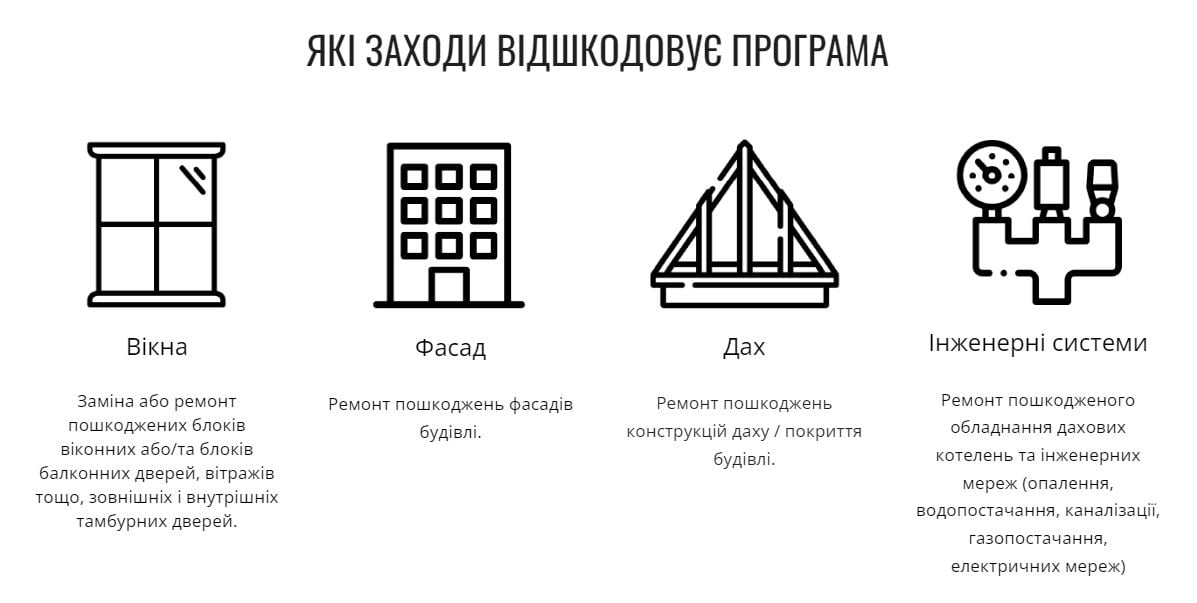
A screenshot from the VidnovyDim program's page
This program doesn't cover the expenses for creating design and estimate documents, inspections, and author and technical supervision.
In the Novo-Oskolsky residential complex (two seven-story buildings built in 2014), facades were repaired within the program's framework, destroyed engineering systems were restored, window and balcony door blocks, and external and internal vestibule doors were replaced. Olena Salamatova mentioned that one of the buildings received 5,416,000 hryvnias in grant money, and the second one was given 1,608,000 hryvnias. In "Zatyshny 2020", one building received a grant of 2,425 thousand hryvnias, while the second received a grant of 3,093 thousand hryvnias for fixing destruction and cuts in thermal insulation of external walls, single window frames, double-glazed windows, as well as for filling up holes and cracks in plastering.
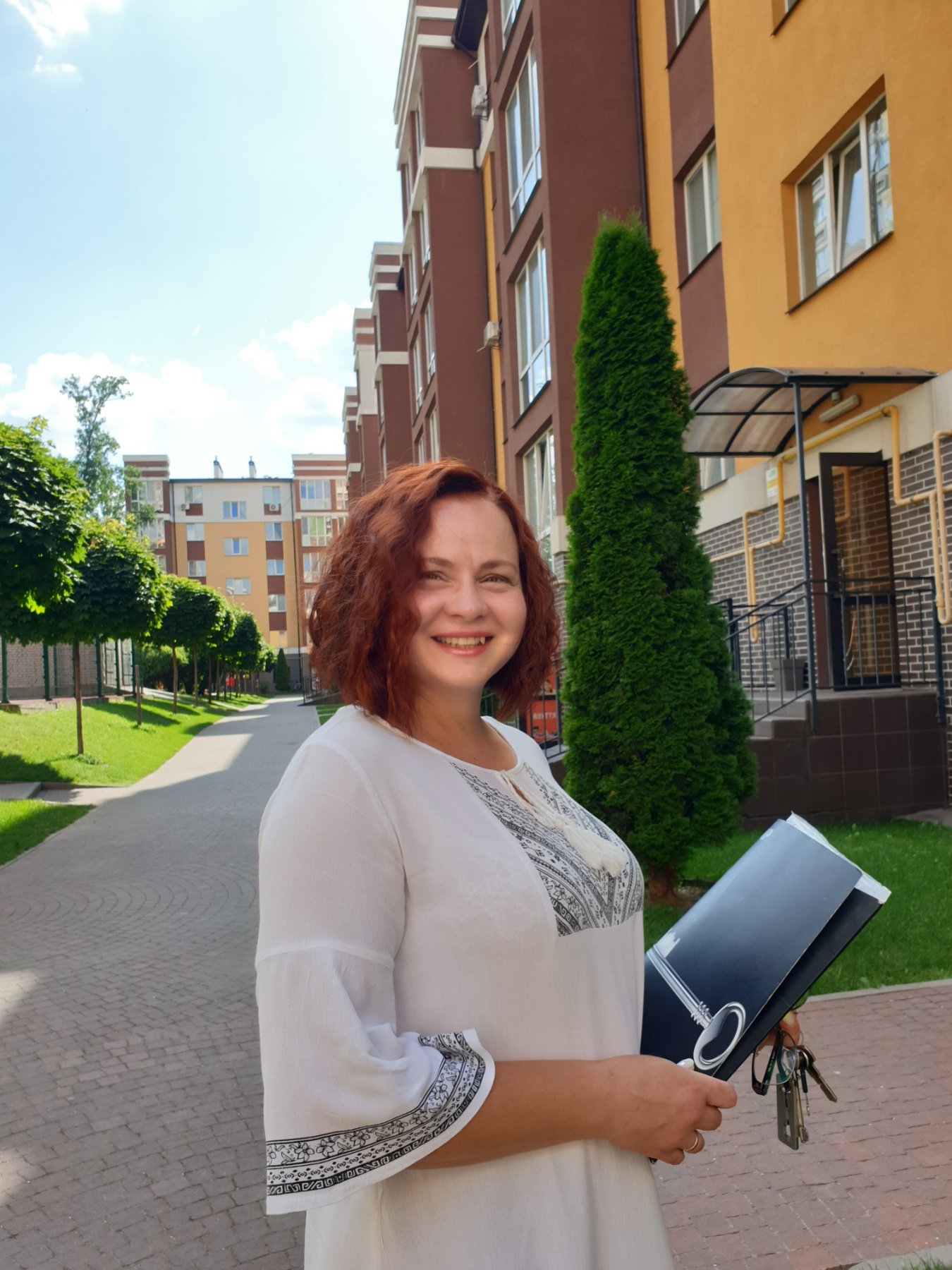
Olena Lytvynenko is the chairperson of the "Zatyshny 2020" condominium board—picture from Olena Lytvynenko's archive.Houses in the "Zatyshny 2020" residential complex that were most impacted were the first to be included in the program – including the one where Olena Lytvynenko lives:
"We didn't have 70% of the windows, and they weren't put in until sometime in December. It was freezing because we had no windows – I had no financial opportunity to install them. It was like we were living outside, trying to stay warm with two measly blankets until the windows arrived, which was awful."
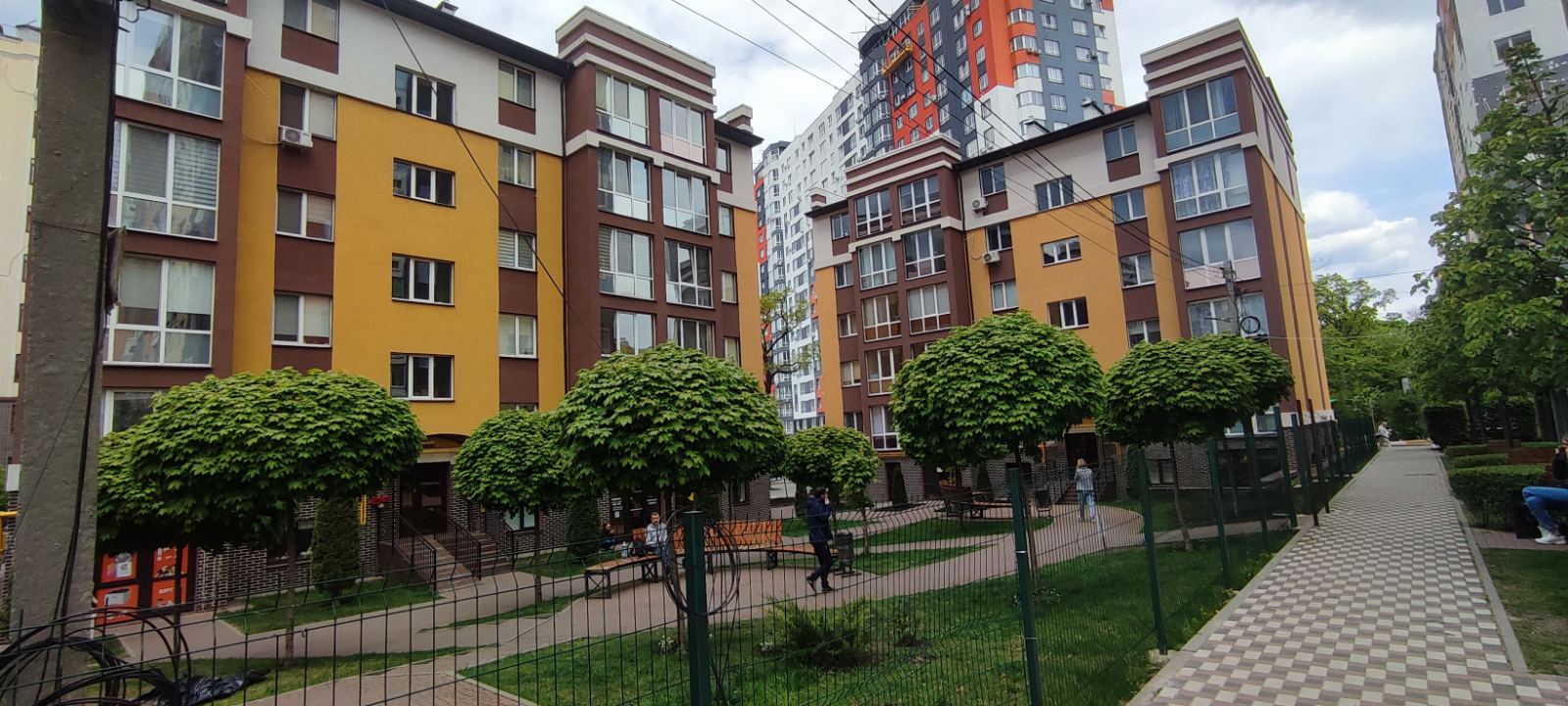
After the houses were restored, almost everyone living in the "Zatyshny 2020" residential complex returned home/ Photo courtesy of the "Zatyshny 2020" residential complex.But after the reconstruction, almost all the residents of the affected buildings returned home, and the head of the condominium was pleased with that.
What is the special advantage of this decision?
High standards of reconstruction
Tamara Burenko is sure that the Energy Efficiency Fund won't let anything slide through that's not up to their high standards.
"Of course, this is an additional burden on the heads of condominiums. We need to find qualified contractors to do it the right way – to do it properly and with confidence that experts will check it over. That's why they do everything well. In addition, according to the requirements of the Foundation, there must be ramps in restored houses."
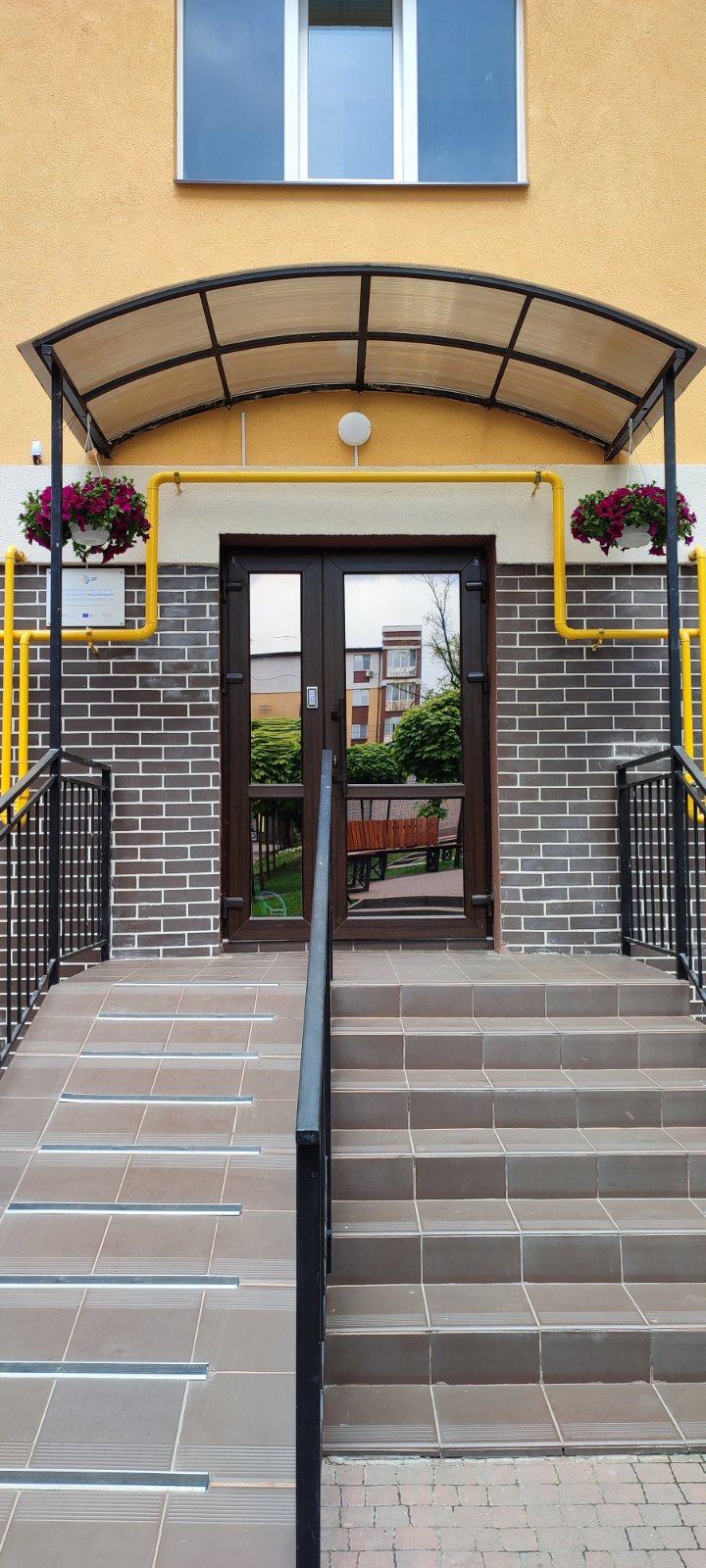
Destroyed houses were restored, taking into account the requirements for building accessibility
By the way, the architect Oleh Hrechukh, analyzing the reconstruction of Irpin, cited another plus of this program: "People gradually get used to the role of responsible homeowners and do not transfer their responsibility as a co-owner to the mayor of the city or other officials, who should not run the economy inside the condominium."
Tamara Burenko, a member of the Irpin City Council, said, "Of the applications the Energy Efficiency Fund has under this program, half of them are from Irpin, which isn't too surprising – our city clearly needs some restoration. But what also isn't too surprising is that our high rises also need quite a bit of funding."
Does it really work?
It's all show on the outside but nothing but ashes within
As previously stated, under the "VidnovyDIM" program, the Energy Efficiency Fund only allocates funds for public spaces. So, if you look at these dwellings, they may appear attractive and well–built from the outside, but on the inside, some of them may have damaged rooms.
Tamara Burenko says other solutions are needed: "I have appealed to both the Foundation and the government more than once to open an additional program for private houses and apartments. After all, the second construction season is already underway. And people will not live in their apartments for the second year because they are destroyed. And if people do not live in their apartments for more than a year, then there is a high probability that they will not come back here. Now many apartments in various conditions are put up for sale."
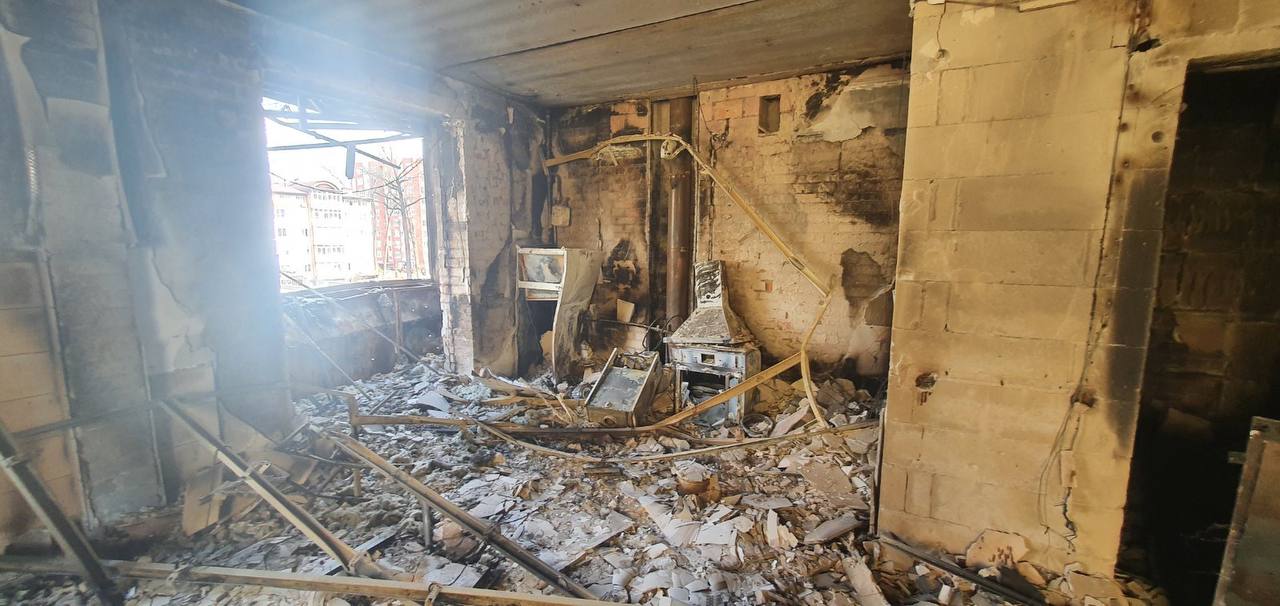
An apartment in Novo–Oskolskyi residential complex burned down. Photo courtesy of Olena SalamatovaThis is the situation with the house in Novo–Oskolskyi residential complex. Olena Salamatova, the head of the condominium, says that during the control visits, representatives from the Energy Efficiency Fund and donors saw it all for themselves. The mayor of Irpin and the deputy relevant minister were also there.
"We are incredibly thankful for the work that's been done for us. However, we need to bring the people living in the house back to life. We are still searching for ways to acquire funds and complete the house's restoration," says Olena Salamatova. "People have nowhere to move in; their apartments have burned to the ground."
Olena hopes that the "VidnovyDIM" program can be adjusted to finance the complete restoration of the homes of those affected.
"People only came back at their own risk and danger, wherever they could find a room because there was nowhere else to live. Fixing the flooring between floor levels isn't included in this project, which is a big problem. We're now looking into different ways of restoring them. To finally get our house in order, we need an extra 5 million hryvnias," the head of the "Novo–Oskolskyi" condominium declared.
Olena Lytvynenko from "Zatyshny 2020" also shares that they are searching for a program for carrying out internal work in one of the impacted homes: "We're counting on the Kyiv Regional Military Administration to lend us a hand here since they have pledged to do so."
How a tight-knit community operates
When asked why they volunteered to become heads of condominiums, both Olenas smile and say that it is too long to tell.
In 2020, when the housing and communal sphere reform took place, the company that served these residential complexes refused to provide services.
"Our service company told us that they were shutting down. We were offered zero options: "Do whatever you want. We'll turn off the lights for you, turn off the elevators, and you keep thinking." recalled Olena Salamatova, head of the "Novo–Oskolskyi" condominium. We didn't have much time to think, so we quickly formed a condominium."
Olena Lytvynenko also became the head of the "Zatyshny 2020" condominium in 2020. She recalls that an active group of residents had already formed in the residential complex at that time. Before that, they had to fight against the attempts of developers to build a road near their residential complex.
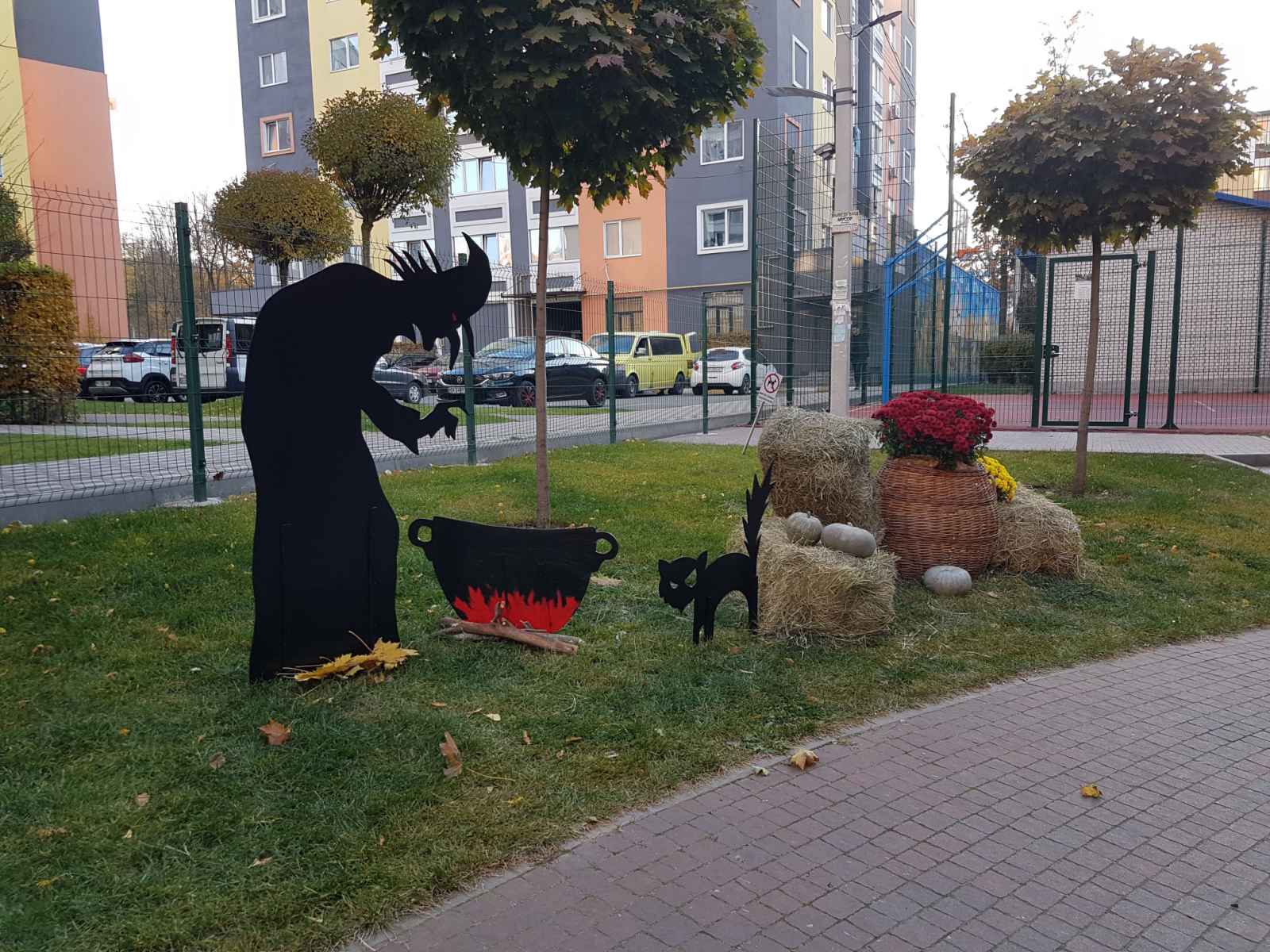
Before the full-scale war, the "Zatyshny 2020" residential complex was used to arrange installations and joint recreation on holidays. Photo from the archive of Olena Lytvynenko
When the condominium first got built, the residents had to maintain the lawns themselves since there wasn't enough money to hire a service.
Olena Lytvynenko says, "We've got six houses now, and everyone in each of them knows one another. Before the war, we'd get together, put up a fire and some music, have some mulled wine, decorate for Halloween and build a pellet Christmas tree for New Year's. It all looked so lovely, and we came together so nicely."
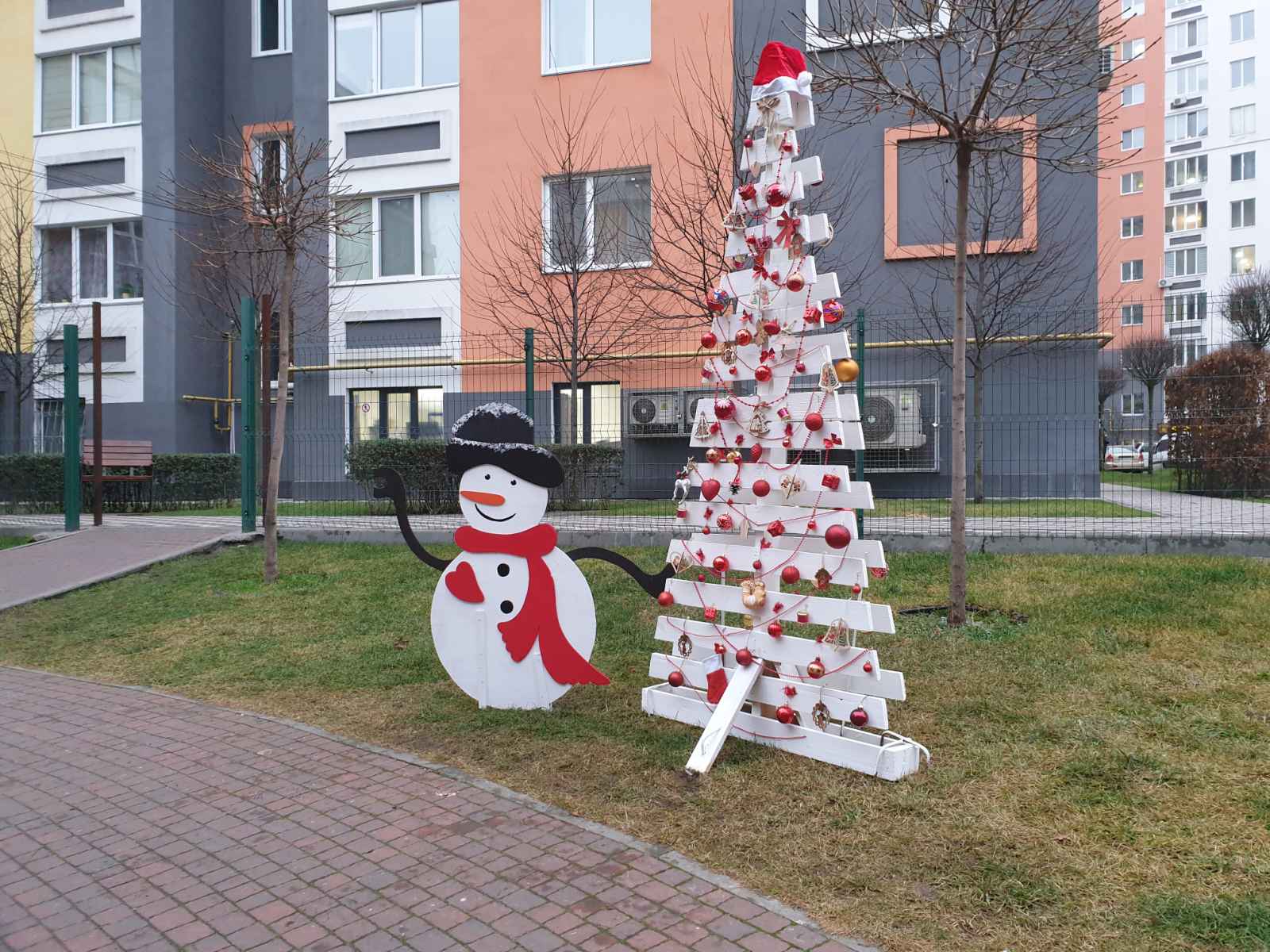
For New Year's, a pellet tree was set up in "Zatyshny 2020". Photo from the archive of Olena Lytvynenko
This solidarity really gave the residents much support during tough times.
"When we were doing repairs before the VidnovyDIM program came along, we had to collect money for five houses with different levels of destruction. Regardless of their own damage, everyone paid the same amount to help other residents return home," says Olena Lytvynenko, head of the Cosy 2020 condominium. "It was really nice to see. It's important that residents have common interests; otherwise, those who don't have too much damage don't bother to help out those who do."
This article was published as part of the Community Voices campaign, which is part of the EU, and its member states Germany, Poland, Sweden, Denmark, Estonia, and Slovenia funded U–LEAD with Europe Program for Ukraine on Local Empowerment, Accountability, and Development. The Program's main aim is to support Ukraine on its way to strengthening local self–government and to promote transparent, accountable, and multi–level governance in Ukraine that responds to the needs of citizens and empowers communities.
Newsletter
Digest of the most interesting news: just about the main thing



